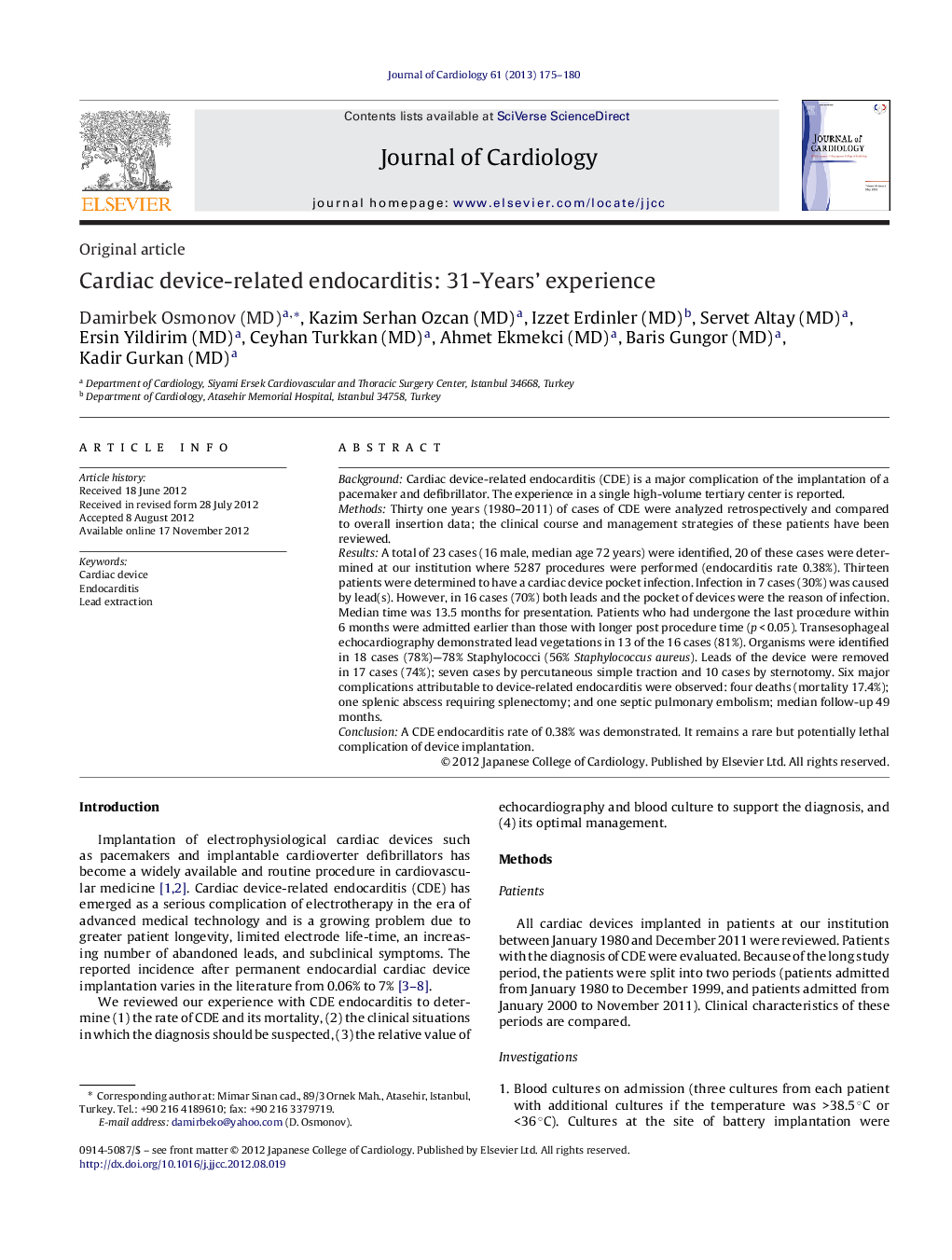| Article ID | Journal | Published Year | Pages | File Type |
|---|---|---|---|---|
| 5984231 | Journal of Cardiology | 2013 | 6 Pages |
BackgroundCardiac device-related endocarditis (CDE) is a major complication of the implantation of a pacemaker and defibrillator. The experience in a single high-volume tertiary center is reported.MethodsThirty one years (1980-2011) of cases of CDE were analyzed retrospectively and compared to overall insertion data; the clinical course and management strategies of these patients have been reviewed.ResultsA total of 23 cases (16 male, median age 72 years) were identified, 20 of these cases were determined at our institution where 5287 procedures were performed (endocarditis rate 0.38%). Thirteen patients were determined to have a cardiac device pocket infection. Infection in 7 cases (30%) was caused by lead(s). However, in 16 cases (70%) both leads and the pocket of devices were the reason of infection. Median time was 13.5 months for presentation. Patients who had undergone the last procedure within 6 months were admitted earlier than those with longer post procedure time (p < 0.05). Transesophageal echocardiography demonstrated lead vegetations in 13 of the 16 cases (81%). Organisms were identified in 18 cases (78%)-78% Staphylococci (56% Staphylococcus aureus). Leads of the device were removed in 17 cases (74%); seven cases by percutaneous simple traction and 10 cases by sternotomy. Six major complications attributable to device-related endocarditis were observed: four deaths (mortality 17.4%); one splenic abscess requiring splenectomy; and one septic pulmonary embolism; median follow-up 49 months.ConclusionA CDE endocarditis rate of 0.38% was demonstrated. It remains a rare but potentially lethal complication of device implantation.
